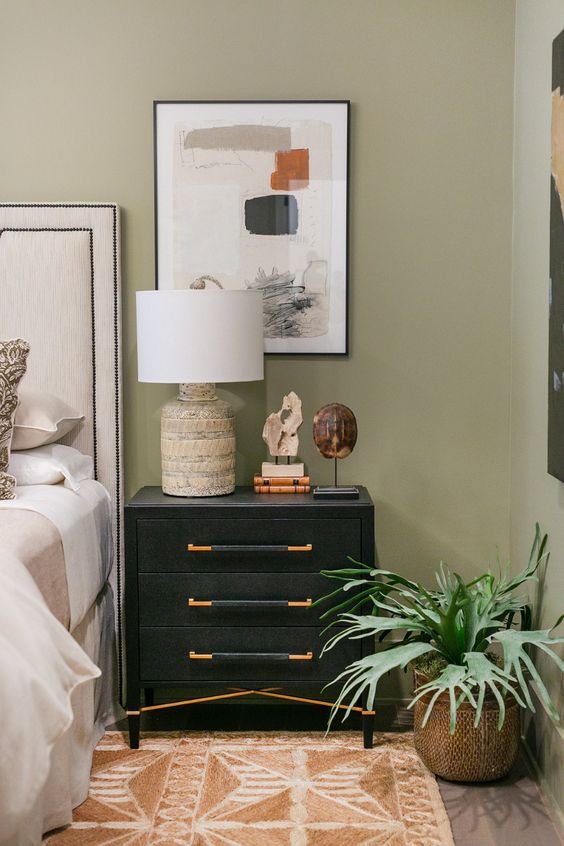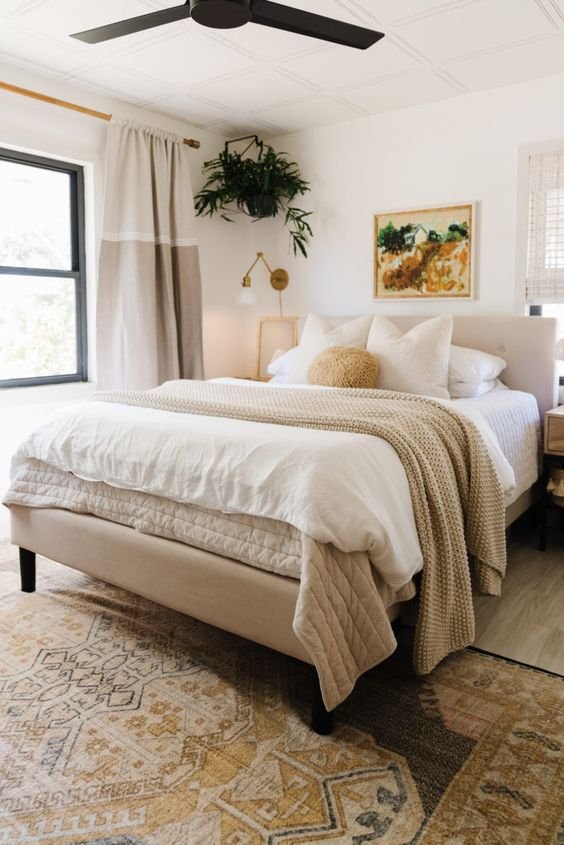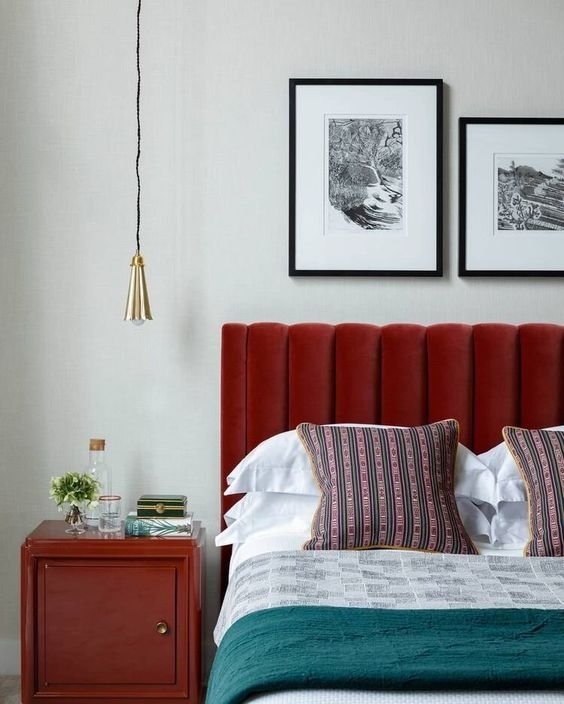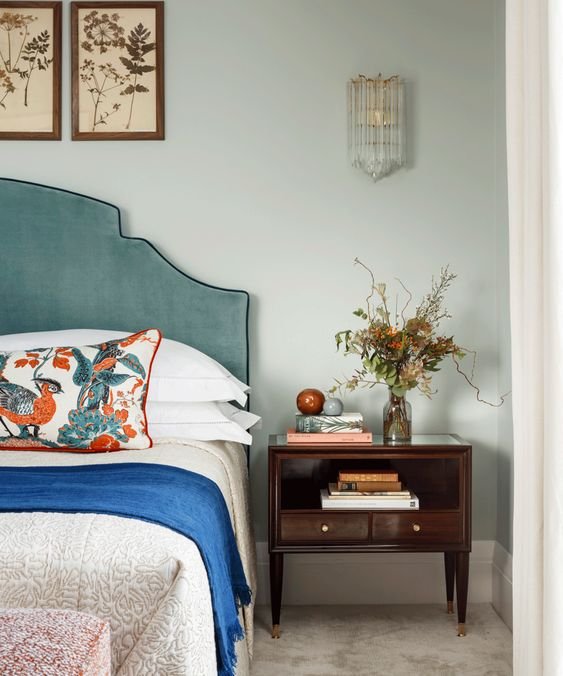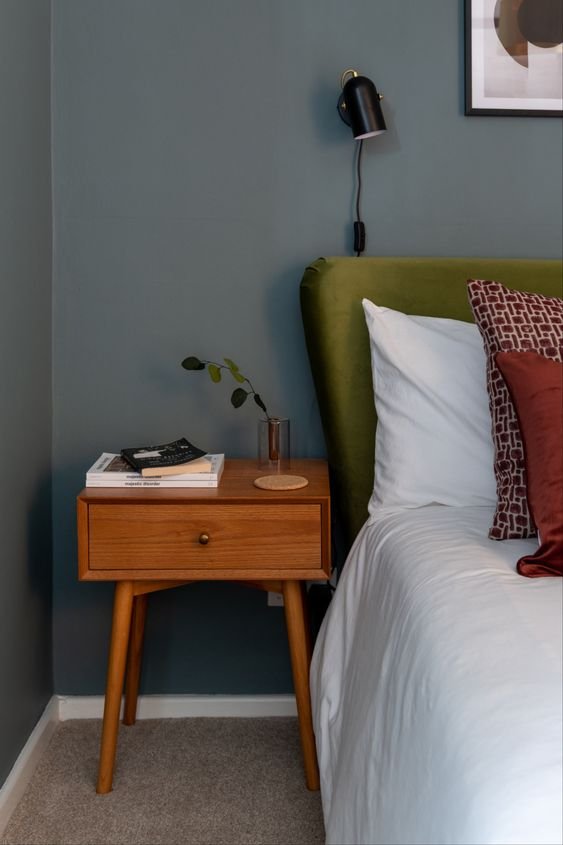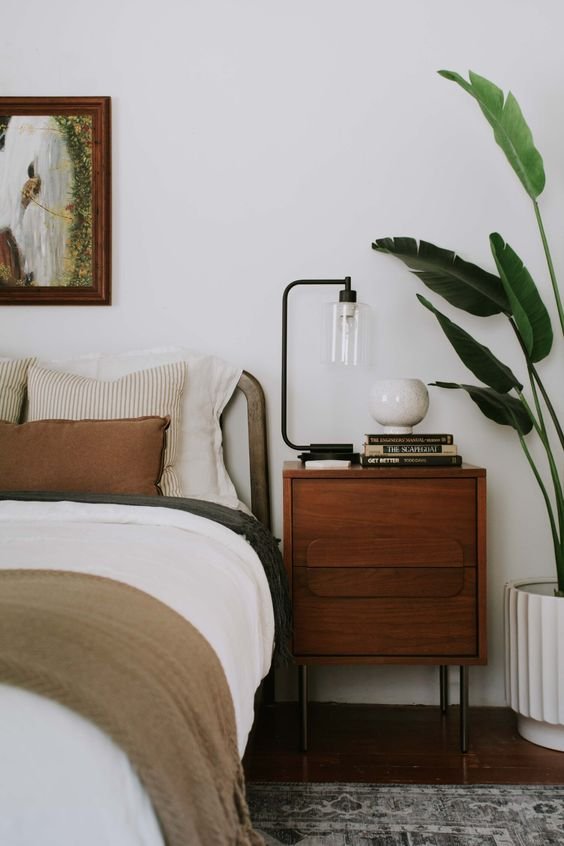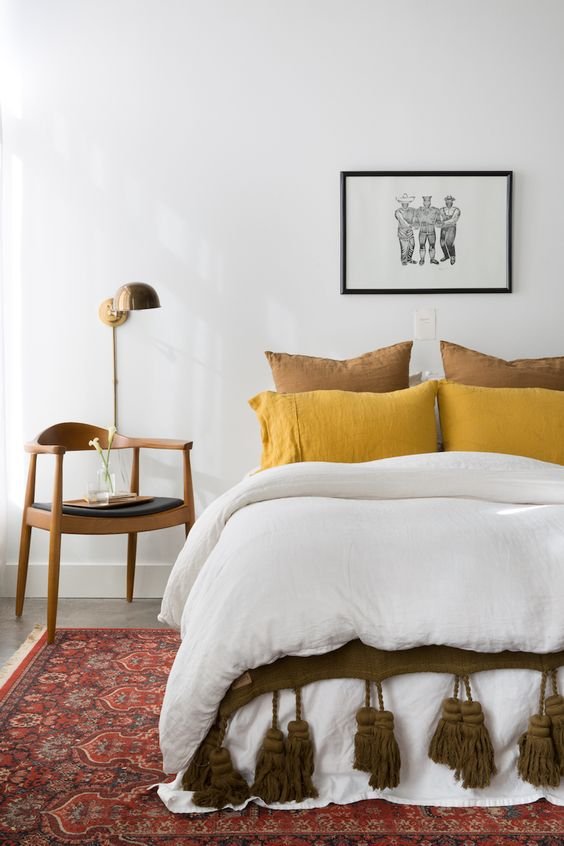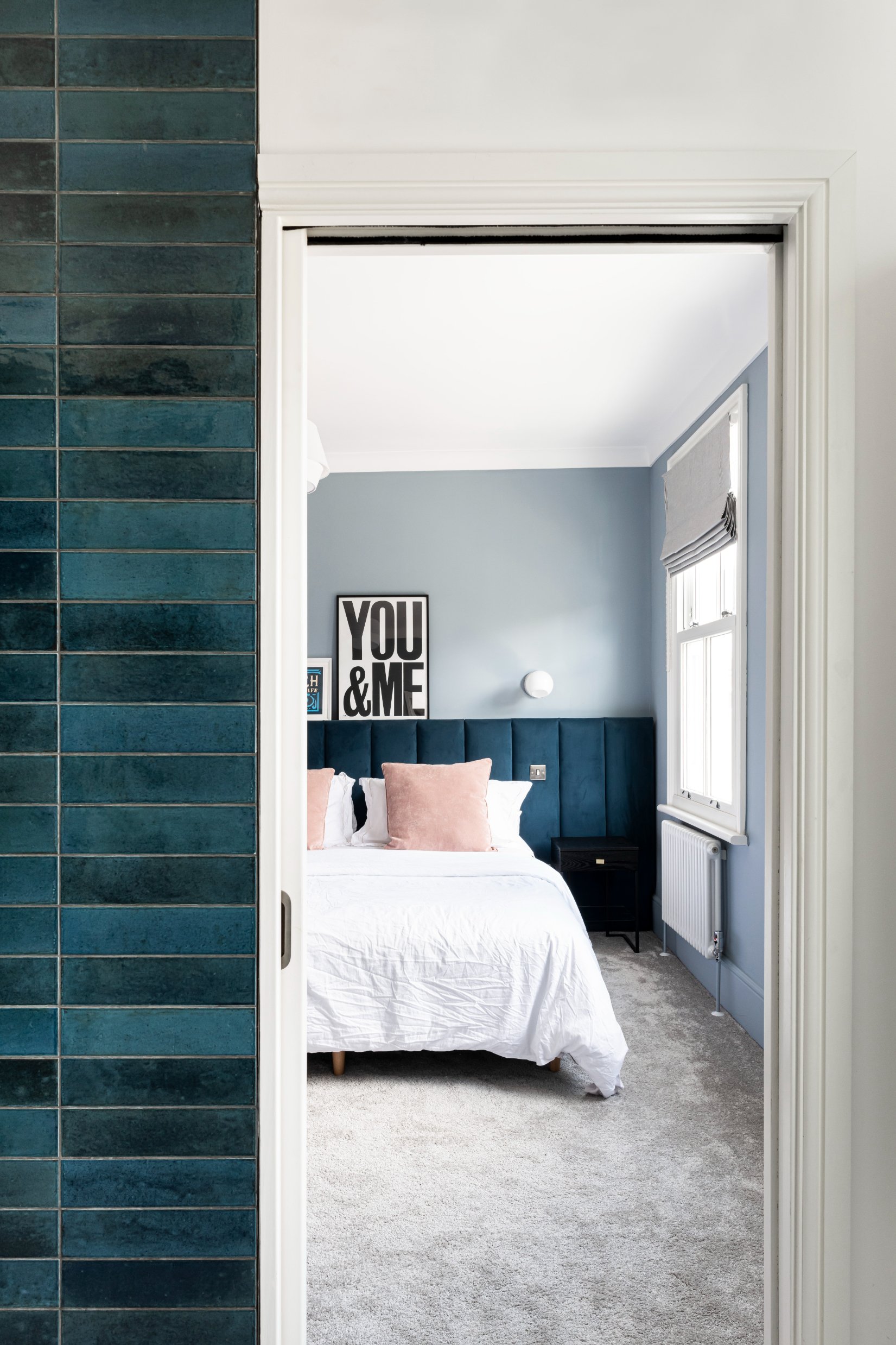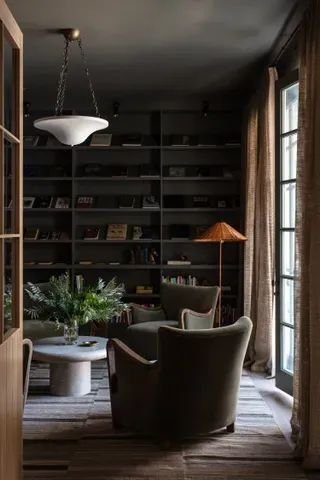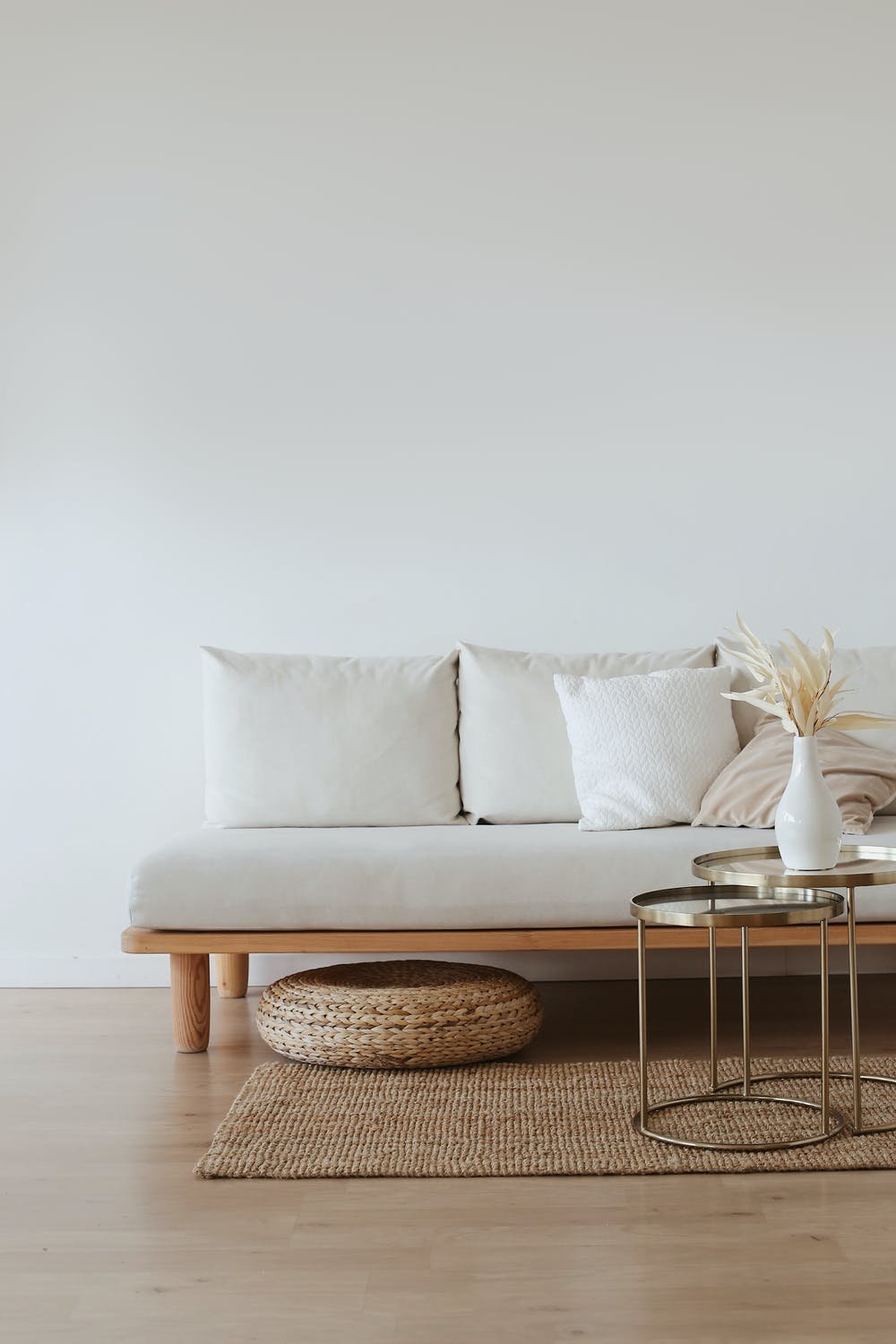10 dreamy bedroom colour schemes
When applying a colour scheme to your bedroom, it helps to remember the 60-30-10 rule. 60% of the room (i.e. the walls) is your base colour, and then 30% is in your secondary colour - this would be your headboard, bedspread or curtains. The final 10% is your accent colour, introduced by art and accessories.
With that in mind, here are some bedroom colour schemes that should inspire you, whether you’re after a bedroom which is dark and moody, calm and cosy, or uplifting and refreshing.
1. Grey-blue, taupe and navy
Design by Barlow & Barlow
Starting off with this calming combination - grey blue is always a good choice for a bedroom… not too dark, not too light, and goes with a number of other accent colours.
Pairing it with navy furniture creates a nice muted tonal feel, and the grey and muted green accent colours give some depth. The tiny pop of red in the art above is a nice contrast, too.
2. Sage green, taupe and teracotta
Source: Style Blue Print
Green is another calming colour, and if you’re after something which brings some colour but isn’t too dark, sage green is a good choice for a bedroom.
It pairs well with other earthy and natural colours, like terracotta and taupe in the example above. Sage can sometimes look a bit washed out, so adding darker furniture helps provide depth.
3. Mushroom pink and dark red
Source: My Scandinavian Home
I love this combination. Pink doesn’t have to be childish, going for one with a browner undertone will avoid it feeling like a kids room. See my blog post - How to decorate with pink.
A calming pairing with pink is a tonal deep, wine red, with muted accents like taupe or grey.
4. Tonal beige
Source: The Blushing Bungalow
Tonal colour schemes are one which uses one colour, but in varying tones. For the ultimate light and airy feeling bedroom, a beige, cream or white tonal colour scheme is the way to go.
The trick with tonal colour is to avoid it looking too flat - you do this by introducing a lot of different textures and layers. In a bedroom that would be through cushions, throws, rugs and window dressings.
5. Dark grey, tan and warm red
Source: Hello Norden
For a moody and masculine colour palette, I love the pairing of a dark grey with leather and dark red. Dark grey can be a cold colour, so pairing it with the warmth brown and the warm red help keep this a cosy colour scheme for a bedroom.
6. White, teal and red
Source: Studio Ashby
Red is an intense colour, meaning it’s sometimes not the best choice for a room that you want to relax in. See my blog post: How to decorate with the colour red.
So whilst I probably wouldn’t recommend painting the walls of your bedroom red, adding deep red accents, especially when paired with a contrasting teal, can create a really fresh colour palette.
7. Tonal blue and orange
Source: Studio Ashby
As I mentioned before, blue is a great colour for a bedroom. Layering different shades of blue help to give some depth, and orange is the opposite to blue on the colour wheel, making it a great accent colour.
8. Dark grey-blue, olive and red
Source: Felicity White Interiors
I love this moody and earthy colour combination. A calming dark grey-blue is going to make your bedroom feel cosy and cocooning. Pairing it with a warm and natural olive green and red is going to create a really nice Autumnal palette.
9. White and tonal brown
Source: Nadine Stay
Natural colours work well in the bedroom because they are by nature, calming (no pun intended). This colour scheme leans on different shades of brown to bring and earthy colour palette. This can be achieved with different wood choices on furniture, bedspreads, cushions and art work.
10. White, yellow and red
Source: Camille Styles
And finally, an uplifting colour palette which isn’t too in-your-face, is a clean white wall with pops of friendly yellow. I’d go for a more mustard yellow in the bedroom, and I love this paired with tan and red accents.
If you’d like my help with your next project, check out my services to see how we can work together. If you’ve enjoyed this blog, don’t forget to subscribe below to receive my new post in your inbox every Sunday.





